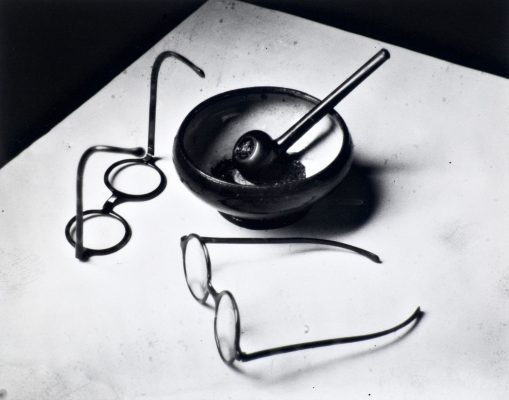Originally, feathers evolved to retain heat; later, they were repurposed for a means of flight. No one ever accuses the descendants of ancient birds of plagiarism for taking heat-retaining feathers and modifying them into wings for flight. In our current system, the original feathers would be copyrighted, and upstart birds would get sued for stealing the feathers for a different use. Almost all famous discoveries (by Darwin, Edison, Einstein, et al.) were not lightning-bolt epiphanies but were built slowly over time and heavily dependent on the intellectual superstructure of what had come before them. E.g., the commonplace book was popular among English intellectuals in the seventeenth-nineteenth centuries. These notebooks were a depository for thoughts and quotes and were usually categorised by topic. Enquire Within Upon Everything, a commercially successful parody of the commonplace book, was published in London in 1890. There’s no such thing as originality. Invention and innovation grow out of networks of people and ideas. All life on earth (and by extension, technology) is built upon appropriation and reuse of the pre-existing.
Mixing passages of his own approximately 50/50 with passages from other writers, Cyril Connolly’s The Unquiet Grave is a cry of mourning about dissolution – of society (WWII), the body (ageing), love (divorce), and literature (‘The English language has, in fact, so contracted to our own littleness that it is no longer possible to make a good book out of words alone.’). Published with footnotes in the UK and the US, Theodor Adorno’s aphoristic masterpiece, Minima Moralia, first appeared, in Germany, in 1951, sans footnotes. What was unexplained art in the German edition became dutiful scholarship when published inEngland; citation domesticated the work, flattened it, denuded it, robbed it of its excitement, risk, danger. Rather like Werner Herzog’s Grizzly Man in that the art consists of taking someone else’s material and reframing it, Michael Lesy’s Wisconsin Death Trip juxtaposes photographs and historical documents from turn-of-the-twentieth-century Jackson County, WI, to create what he calls ‘an experiment in both history and alchemy’ – the alchemy being Lesy’s transfiguration of American pastoral into Munch nightmare. In Carole Maso’s quotation-crazy book The Art Lover, she can’t stop thinking via what other people are thinking. I can’t stop thinking via what other people are thinking.
*
A recent biography of Ryszard Kapuściński alleges that he frequently forged details, invented images, and claimed to have witnessed events that he didn’t, in fact, witness. Gerald Posner resigned from the Daily Beast after admitting that he he’d lifted sentences from a Miami Herald editorial, a Miami Herald blog, Texas Lawyer magazine, and a health journalism blog; Posner blamed the ‘warp speed of the net’ and his ‘master electronic files system’. The publisher of Charles Pellegrino’s most recent book, The Last Train to Hiroshima, withdrew it from publication following allegations that Pellegrino had created characters and extensively used a source whose status as witness to the bombing of Hiroshima was fabricated. A review of John D’Agata’s About a Mountain criticised him for compressing the timeline of some of the events in the book – which he acknowledges doing in the afterword.
Why does this keep happening over and over and over again? Have we suddenly become a nation of liars? Of lawyers? Of children, incapable of distinguishing between event and interpretation, and between fact and ‘truth’? Why this overreaction to minor cases of plagiarism? Why this overemphasis on the exact ‘truth’, which is, of course, impossible to know? These nonfiction scandals du jour, these worst-case scenarios, get routinely deployed to position non-fiction as a subset of journalism, which it isn’t. These authors are used as scapegoats to expiate the culture’s sins. The whole huge loud roar, as it returns again and again, has to do with the culture being embarrassed at how much it wants (how much I want) the frame of reality and, within that frame, great drama. Nonfiction writers have always invented. In History of the Peloponnesian War, Thucydides makes up the generals’ speeches. Thomas De Quincey’s Confessions of an English Opium-Eater is a heavily fictionalised account of De Quincey’s addiction to and recovery from opium. Edmund Gosse’s Father and Son recounts page after page of supposedly verbatim dialogue from fifty years earlier. George Orwell’s classmates questioned virtually every detail of ‘Such, Such Were the Joys’. Dyer on Kapuściński: ‘His radically unconventional approach is entirely novel in the literal sense that no one else attempts anything like it. His material generates an apparently ad hoc aesthetic that draws in the chaos threatening to engulf him; the outcome – the formal outcome – is perpetually in the balance, hence the suspense.’ The line between fact and fiction is fuzzier than most people find it convenient to admit. The common(sense) assertion: the novelist is engaged on a work of the creative imagination, while the duty of the non-fiction writer is to tell what really happened – a distinction easy to voice but impossible to sustain. Imagination and memory are Siamese twins attached at the head; you can’t cut them apart. Amazingly, though, there persists the absurd view of non-fiction as 100 per cent ‘true’ (‘true’ in the way a newspaper article is supposedly ‘true’) and 100 per cent ‘original’ (not hugely dependent on and predatory toward previous creative acts).
*
Who wouldn’t wish on his musical headstone the carved-in-granite encomium ‘Music Pirate’? Art is built by pirates:
Johann Pachelbel’s ‘Canon and Gigue in D Major for three Violins and Basso Continuo’ was written around 1680 and lost. Rediscovered in the 1920s, it was first recorded by Arthur Fiedler in 1940. The music repeats a two-bar bass line and harmonic sequence twenty-eight times, using the scale sequence I, V, vi, iii, IV, I, IV, V – a sequence Handel used in the second movement of his ‘Organ Concerto No. 11 in G minor’, Haydn used in the minuet of his string quartet ‘Opus 50 No. 2’, and Mozart used in his ‘Piano Concerto No. 23’ and in a passage of Die Zauberflöte. Haydn may have taught the sequence to Mozart. None of the three composers following Pachelbel exactly matches his harmonic structure; they all created slight variations. Pachelbel’s structure is thought to derive from the ancient six-part polyphonic song form called the ‘round’, in which singers enter the song at different points, as they do in, say, ‘Row, Row, Row Your Boat’. The date of origin for the round is estimated at 1260, and the composer is anonymous. Louis Armstrong was a member of King Oliver’s band when Oliver wrote an unmemorable blues number called ‘West End Blues’, a sleepy, entertaining tune named after an area of New Orleans on the west side of Lake Pontchartrain. Within three weeks of Oliver’s recording the song, Armstrong had formed his own band, the Hot Five, and rerecorded ‘West End Blues’ to his standards. The fifteen-second opening cadenza announced jazz as art, and Armstrong’s closing signature of high B-flat notes made it one of the most difficult-to-imitate solo pieces in jazz music. When James Brown announces during the funk-groove workout ‘Funky Drummer’ that it’s time ‘to give the drummer some’, the Godfather of Soul provides instructions: ‘You don’t have to do no soloing, brother – just keep what you got; don’t turn it loose, ’cause it’s a mother.’ That mother has become one of the most sampled song bites of all time. It’s been estimated that the Honeydrippers’ ‘Impeach the President’ has been sampled on approximately one out of every five rap songs from 1988 to the present, including songs by Big Daddy Kane, Ice Cube, NWA, Audio Two, and LL Cool J. The sample has become public domain through overuse. The Honeydrippers’ sample is lingua franca for rappers across the globe, a forged signature recognised as entry into the game. Bob Marley and the Wailers took just the part of Bob Dylan’s ‘Like a Rolling Stone’ that appealed to them and built their entire cover version out of it, manually looping the chorus of ‘Rolling Stone’ over and over again, writing new lyrics along the way. I love that move of theirs – giving themselves permission to dissect the popular song as they saw fit instead of repeating it verbatim. Dylan pillaged the Civil War poet Henry Timrod for lyrics on his album Modern Times. His previous album, Love and Theft, steals passages from a Japanese gangster novel, Junichi Saga’s Confessions of a Yakuza. Very early in his career, Dylan was the James Frey of the folk movement (or at the very least the JT LeRoy). He lied massively about his past to any reporter who would listen. He invented an elaborate series of backstories for himself: running away from home, travelling with the circus, working on ranches, being a heroin addict, contemplating suicide. He found his real life lacking authenticity, so he invented a folk music hero and then lived the role: ‘Song to Woody’ (1962). By the time people caught on to his ruse, the truth didn’t matter anymore. And unlike Frey, he never gave an explanation, never apologised. Instead, he just moved on to another persona. I’m not there; neither are you. (I’ve never deleted an email so fast as one I received from Frey telling me he’d read the chapter in Reality Hunger about A Million Little Pieces and I was the first person to ever really understand him . . . ) Miles Davis called the Beastie Boys’ Paul’s Boutique one of the greatest albums ever, as did Henry Rollins of Black Flag. Chuck D of Public Enemy said one of the insider secrets of hip-hop at the time was that Paul’s Boutique outmaneuvered other rappers with inventive beats cobbled out of multiple sources. The Beasties hired the Dust Brothers to produce the album, and when the Beasties showed up in the studio, they listened to tracks the Dust Brothers had created, dense club mixes. Half the album is made up of these foundational remixes. Danger Mouse’s Grey Album is built entirely of samples from the Beatles’ White Album and Jay-Z’s Black Album. Danger Mouse could never have cleared all the samples, so the mash-up had to live its life entirely underground. The album, a masterly display of collage and repurposing, positions Danger Mouse as Robin Hood, who appropriates music from the kings and plays it for us, the internet masses. Mountain Con was an obscure Seattle band whose CD The MC Stands for Revolution synthesised rock, R&B, and rap, until its record company made the band remove all the Rolling Stones and James Brown samples from the music. The album that was finally released pales in comparison. The original, however, was trying to usher in a new era of rock that never was. When Nullsoft released the MP3 audio player Winamp in 1997, the web went music-crazy. Peer-to-peer file sharing morphed into individual collages of music ripped from CDs; MP3.com offered thousands of MP3s by musicians, mostly anonymous ones, free. The record industry began years of litigation against free file-sharing entities. The beloved and mourned Napster hit the market in 1999 as the first large-scale, peer-to-peer, music-sharing communal site. The music industry branded Napster ‘music pirates’. Then the music industry went after individuals, mainly teenagers, who were trading tracks on Napster and reframing music to individual taste and demand. Napster’s file-sharing software was eventually shut down due to legal pressure, but the war goes on (I’m just a foot soldier) and sampling is ubiquitous.
*
I’m not an anti-copyright absolutist; I’m not the director of The King’s Speech and don’t walk around selling DVDs of that film with my name on it. There are three crucial terms when it comes to copyright: fair use – you can quote 10 per cent or less of a book, or 250 words or fewer from a shorter work; public domain – you can quote from Kipling, since he’s been dead for more than seventy-five years; and, most importantly, transformation – in your appropriation of another work, are you simply plagiarising, or are you remaking it? This is where it gets harder to define and most interesting (immediately after I asked a student if she’d copied a passage from Wikipedia, she changed the Wikipedia entry, erasing the evidence). Lawyers, servants of late-market capitalism, want a bright line now, but in the history of art there has never been a bright line.
A system of writing was invented in isolation (at most) four times. The first system of writing was invented in Mesopotamia. The second might have been in Egypt, but there’s a compelling argument that the Mesopotamians influenced the birth of the Egyptian writing system. The third was in China, and again there’s debate about whether the Mesopotamians influenced the Chinese. The fourth, and only the second undoubted instance, was thousands of years later in Mezo-America with the Mayan civilisation, which had no contact with Mesopotamia. Each of those (between two-four) isolated inventions of writing systems was not some lightning-strike invention; in each case, it evolved over many hundreds of years and was a collaboration among whole societies, evolving and being modified generation after generation, starting with a few agreed-upon symbols and expanding from there as necessity dictated. None of these original writing systems were ‘copyrightable’. The twentieth/twenty-first-century concept of owning certain arrangements of words runs counter to 5,000 years of written language development. Every other alphabet and writing system on the planet is an appropriation of one or more of these original two-four systems. The borrowing has been with us from the beginning; ‘theft’ starts at the extreme head waters of the big muddy river: Folk art from the beginning of recorded civilisation until now. Roman sculptors’ direct copies of Greek sculptures. John Dominic Crossan, The Historical Jesus (1991), which is painstakingly researched and shows in great detail how the New Testament is a mash-up of (literally) epic proportions. The Gospels are pretty much collages of many ancient texts, with the older ones being borrowed from and rewritten in the newer ones. The New Testament that people read today is a composite of numerous sources, and in many cases, such as the Gospel of Mark, one ancient writer wrote over the top of a previous one, tacking the whole rising from the dead ending onto a previous document that ended without any such miracle. Botticelli’s ‘Birth of Venus’ (1482), which is based directly on Apelles’s depiction, in fourth century BC, of the same event. Shakespeare, Antony and Cleopatra (circa 1603-1607); the description of Cleopatra on her royal barge is a near-verbatim sample from Plutarch’s Life of Mark Antony (75 AD; T. S. Eliot used the same passage, verbatim, two thousand years later in The Waste Land). Shakespeare ‘plundered’ Arthur Brooke’s The Tragical History of Romeus and Juliet (1562) for his play of (nearly) the same name. Of the 6,000 lines in Henry VI, Parts I-III (1591), 4,000 are directly derived from Holinshed’s Chronicles (1577). The Sarabande movement in each of the Bach Cello Suites (1720s) is a three-beat dance form that the Baroque composers had adapted in the eighteenth century from an African dance form, which had been discounted in many European quarters as lascivious and vulgar. Thomas Jefferson’s miracle-skeptical remix of the Bible (1820), keeping only the social teachings (see Crossan, above). Manet’s ‘Olympia’ (1863) is a reworking of Titian’s ‘Venus of Urbino’ (1538), which is a reworking of Giorgione’s ‘Sleeping Venus’ (1508), which is a reworking of one of the woodcut illustrations to Francesco Colonna’s ‘Hypnerotomachia Poliphili’ (1499); Titian finished the landscape and sky of ‘Sleeping Venus’ after Giorgione’s death. Tchaikovsky’s 1812 Overture (1880) hijacks the French national anthem (1792). Igor Stravinsky, The Rite of Spring (1913). Béla Bartók: ‘Stravinsky never mentions the sources of his themes. Neither in his titles nor in footnotes does he ever allude to whether a theme of his is his own invention or whether it is taken over from folk music. Stravinsky apparently takes this course deliberately. He wants to demonstrate that it does not matter a jot whether a composer invents his own themes or uses themes from elsewhere. He has a right to use musical material taken from all sources. What he had judged suitable for his purpose had become through this very use his mental property.’ Ezra Pound’s ‘creative translation’ Homage to Sextus Propertius (1919) has done more than any other book to keep alive the poetry of Propertius. Some have criticised Pound’s ‘errors’, while others understand that Pound was playing cover versions of the Roman poet and taking liberties as he saw fit. See J.P. Sullivan, Ezra Pound and Sextus Propertius: A Study in Creative Translation (1964). ‘Tradition and the Individual Talent’ (1919), in which Eliot discusses his theories on influence and borrowing. The Waste Land (1922), of course, is composed almost entirely of literary samples, references, and conspicuous assimilations – fragments to shore against his ruins (as is this entire chapter, if not this entire book). Walter Benjamin’s Arcades Project (1927-1940; incomplete at the time of his death –endlessly being completed by us, after him). Benjamin Britten (1913-1976), who was, according to Stravinsky, ‘not a composer but a kleptomaniac’; Stravinsky said this. Duchamp didn’t conceive ‘Fountain’ (1917); nor did he make it. A urinal was art because he said it was. Since Duchamp, what is the nature of art? In 1941, on his front porch, Muddy Waters recorded a song for the folklorist Alan Lomax. After singing the song, which he told Lomax was entitled ‘Country Blues’, Waters described how he came to write it. ‘I made it on about the eighth of October ’38,’ Waters said. ‘I was fixin’ a puncture on a car. I had been mistreated by a girl. I just felt blue, and the song fell into my mind and it come to me just like that and I started singing.’ Then Lomax, who knew of the Robert Johnson recording called ‘Walkin’ Blues’, asked Waters if there were any other songs that used the same tune. ‘There’s been some blues played like that,’ Waters replied. ‘This song comes from the cotton field and a boy once put a record out – Robert Johnson. He put it out as named “Walkin’ Blues.” I heard the tune before I heard it on the record. I learned it from Son House.’ In nearly one breath, Waters offers five accounts: his own active authorship – he ‘made it’ on a specific date. Then the ‘passive’ explanation: ‘It come to me just like that.’ After Lomax raises the question of influence, Waters, without shame or trepidation, says that he heard a version by Johnson, but that his mentor, Son House, taught it to him. In the middle of that complex genealogy, Waters declares that ‘this song comes from the cotton field.’ Aaron Copeland’s Appalachian Spring (1944) kidnaps the Shaker melody “Simple Gifts” (1848). Nabokov’s Lolita (1955) is based heavily on Heinz von Lichberg’s Lolita (1916); see Michael Maar’s The Two Lolitas (2005). Martin Luther King Jr.’s sermons of the 1950s and ’60s (accused of plagiarism, as was his 1955 Ph.D. thesis). Eduardo Paolozzi’s collage-novel Kex (1966), cobbled from crime novels and newspaper clippings. John Brockman, Afterwords (1969) – composed entirely of other writers’ passages. In 1964, Dionne Warwick sang the original version of ‘Walk On By’, which was written by Burt Bacharach and Hal David. Five years later, Isaac Hayes completely repurposed the song. The chords and lyrics are the same, but Hayes takes the 1964 version and warps it nearly beyond recognition. What was a two-and-a-half-minute pop single becomes a twelve-and-a-half minute soul epic before imploding into the funk riff of a single guitar. Bacharach and David still owned the copyright, but only the veneer of the original is recognisable. Harold Bloom, The Anxiety of Influence (1973), getting it wrong, as always; cf. Jonathan Lethem’s ‘The Ecstasy of Influence’. In Jamaica in the early 1970s, Osborne Ruddock (‘King Tubby’) and Lee (‘Scratch’) Perry, using primitive, pre-digital gear, created new ‘versions’ of previously recorded music. Ruddock’s and Perry’s techniques are the basis on which hip-hop was built. Roland Barthes, Image-Music-Text (1977), specifically the essay ‘Death of the Author’, in which Barthes says, ‘A text is made of multiple writings, drawn from many cultures and entering into mutual relations of dialogue, parody, contestation, but there is one place where this multiplicity is focused and that place is the reader, not, as was hitherto said, the author. To give a text an Author is to impose a limit on that text, to furnish it with a final signified, to close the writing.’ William S. Burroughs and Brion Gysin, The Third Mind (1977): a collection showcasing and theorising about the cut-up technique. William Burroughs Reader, ed. John Calder (1982); Brion Gysin’s ‘Cut-Ups: A Project for Disastrous Success’ discusses the process that he and Burroughs pioneered. Also in Burroughs Reader: the Paris Review interview in which Burroughs discusses the cut-up method. Kathy Acker (in Burroughs’s wake), Blood and Guts in High School (1984). Instead of drawing a conclusion for you (or writing a story for you with a beginning, middle, and end), I’ll give you all the pieces for a picture and let you figure it out (interpret it). The pieces are far from random, but your conclusion isn’t fixed. Péter Esterházy’s Helping Verbs of the Heart (1985) – same MO as Afterwords. Warhol (d. 1987). Graham Rawle’s novel Diary of an Amateur Photographer (1998), its text harvested from photography magazines. Copyright Criminals (2009), directed by Benjamin Franzen. Kenneth Goldmith, ‘Flarf is Dionysus; Conceptual Writing is Apollo’, Poetry (2009). Flarf poetry: derived primarily but not exclusively from Google searches, poems created, revised, changed by others, incorporated, plagiarised in semi-public forums. James Blake, James Blake (2011). The cover photo shows his face as a blur, which is a fitting metaphor for a singer/electronic composer who uses primarily other people’s voices. His songs, occupying a demilitarised zone between genres, are simultaneously avant-garde instrumental music, piano-driven singer-songwriter R&B, and throbbing 808 spacey hip-hop. At times, via Auto-Tune, he pushes ‘his’ voice beyond recognition or human tonality.
*
The mimetic function has been replaced by manipulation of the original. Art, not to mention life, now seems to happen primarily in liminal spaces, edited, quoted and quoted again and recontextualised, replaced, collaged, stitched together anew (the stitching together anew is what I really care about).




